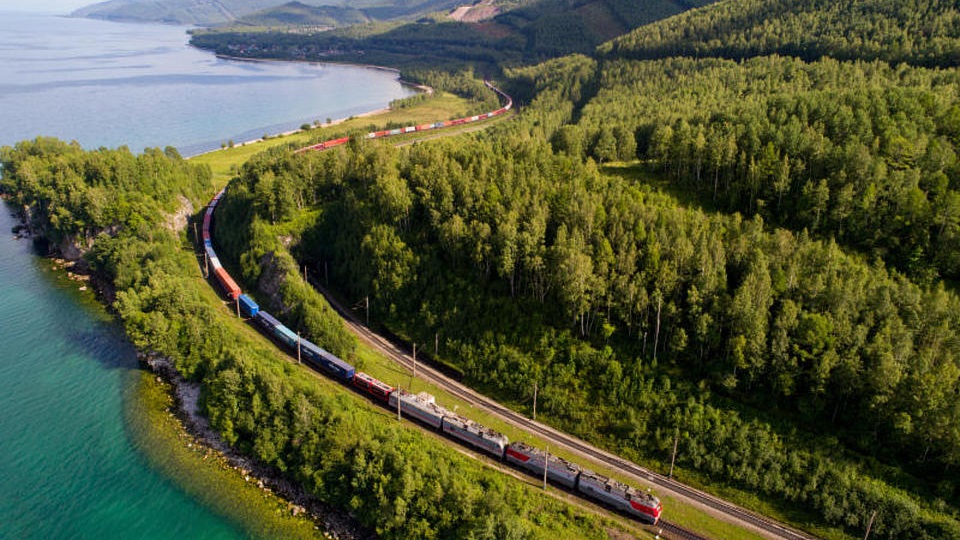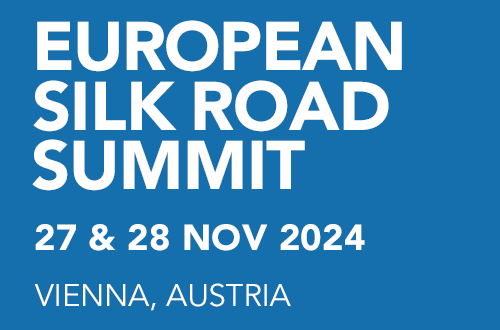Chinese subsidies for the New Silk Road on a decline
1 October 2019
What has been anticipated for many months now seems to be happening. The Chinese subsidies for rail freight traffic to Europe are on a decline. The government has put in place ceilings on the local subsidies, which will be lowered even further in 2020. This was reported by several industry experts.
There is been no formal announcement on this policy, but the news has been going around. Panda Paw Dragon Claw, a Chinese-based blog about Chinese foreign policy, refers to the Ministry of Finance end of August. Reportedly, local governments may not subsidise train journeys to Europe by more than 30 per cent of the original price in 2020. This is similar to what logistics providers have heard.
A ceiling is reportedly already in place at the moment, marking the maximum permitted financial support at 40 per cent of the original price. In 2022 the subsidies should be phased out altogether, the blog entry reads. These announcements are in line with the initial plan of the Chinese government when it comes to subsidising the Belt and Road initiative (BRI). Eventually, Eurasian rail freight traffic should be able to stand on its own feet.
Change of tide
This year was the first year in which the unlimited support of the Chinese government for the Eurasian rail freight industry was slightly altered. Or actually in September 2018, when the Chinese government issued a new restriction: only fully loaded trains could depart China to the west. A train with 40 full containers and one empty would not be subsidised. Although the rules had been in place since 2017, they were not actually applied till then.
In the first half of 2019, the seven most important Chinese localities on the New Silk Road reported a loaded container ratio of over 94 percent on international freight trains heading for the west. These localities handled about 73 percent of all the China-Europe cargo trains. This indicates that the goal of reducing the number of empty containers departing China has been achieved.
Text continues below the image

Silk Road bubble
This was a measure urgently needed, according to critics. The New Silk Road was starting to look like a bubble, where the actual market demand was not in line with the number of trains operated. Because, as Panda Paw Dragon Claw suggests, showcasing a high rate of train operations is how local governments could attract the attention of the central government, in the form of financial support.
The discrepancy was brought to light by the Chinese Business Journal, a newspaper supervised by the Chinese Academy of Social Sciences, which concluded an extremely low rate of full containers on outbound trains. In the worst case, a train would run with forty empty containers and only one loaded container, in order to make the journey count. This was common practice in what was described as the intense competition between local governments on the New Silk Road.
Abnormal rates
As the number of journeys were a method of attracting financial support, the level of subsidies for these journeys have been another distortion to the market. While the Ministry of Finance provides a guiding subsidy ceiling of 0.8USD/container/kilometre, the support provided by the local governments could be between 3000-5000 USD per container, depending on the region.
According to Panda Paw Dragon Claw, Xi’an is the most generous with subsidies, “dwarfing other provinces by a wide margin”. The report describes: “The subsidies are of the scale that they bend the gravity of trade. In the most extreme cases, traders in the far west Xinjiang Autonomous Region, which already borders Central Asia and is itself a Belt and Road rail hub, would move their cargo thousands of kilometers to the east to capitalize on the Xi’an government’s free handouts before transporting west across the Eurasian continent.
And further on: “The result is that Europe-bound freight train trips from Xi’an grew by a whopping 536.6 per cent in just one year from 2017 to 2018.” This claim can only be confirmed by the parties involved. Several companies confirmed that Xi’an is currently the cheapest option, and the one most likely to remain the subsidised rates.
Text continues below the image

Consolidation
However, it now looks like this practice is to be reversed, with the Chinese government introducing measures for the market to be restored. In response to the revelation on empty containers, the China Railway Corporation (CRC) said in an earlier interview with the Chinese state-run Global Times: “When localities were competing for hub status years ago, the issue of empty containers was serious. However, as the service has grown in scale, and industry players learned to discipline themselves and the concept of high-quality development took root, the phenomenon has become a thing of the past.”
The same expectation is for the reduction in subsidies. The general belief is that without subsidies, rail freight traffic on the New Silk Road will continue to move, although with fewer players on the market. “The smaller companies with irregular shipments will disappear. At the moment, these companies are fighting for Chinese support. Without subsidies, the market will be more realistic and demand-driven”, said Uwe Leuschner from DB Cargo Eurasia at the recent RailFreight Summit in Gdansk.
Abnormal rates
And if everything happens according to what is written, also Xi’an will be put to the test. But as a proven hub on the New Silk Road, this should not affect business too much, stakeholders say. “A province as Xi’an does not need such low rates. These are not normal prices, they are almost lower than what is charged for sea freight. That is not market conform”, comments Tufan Khalaji, Director Business Unit Intermodal at NUNNER Logistics, a company regularly shipping to and from Xi’an.
According to Alkhalaji, the reduction in subsidies is a blessing for the market, as the low prices are not good for the market in the long run as customers would switch to other modalities as soon as these subsidies disappear. “We do believe that Xi’an will be affected by these rules, but we believe this will only result in normal rates”, said the logistics provider.
European Silk Road Summit
Do you want to learn more about these developments on the New Silk Road in 2019? Consolidation of the market will be the topic of discussion on the first day of the European Silk Road Summit, to be held on 26 and 27 November in Venlo, the Netherlands.
Uwe Leuschner (DB Cargo Eurasia), Wanxu Dong (BTE), Thomas Kowitzki (DHL Forwarding) and Jan Rainer Strassburg (DB Schenker) will take place on stage to discuss the effect of new measures on the business in 2019. Tufan Khalaji will follow with a presentation about LCL shipments, explaining how this transport model could make for an efficient transport chain.
Registration for the event is now open. The programme and speakers are on the website.
Also read:
- Most trains departing China now fully loaded
- Only fully loaded trains to depart from China
- New Silk Road could surge to million TEU in 2025, but with subsidies
morenews
Programme of #ESRS2023 is complete: Meet our speakers
– 3 November 2023 – The programme of the European Silk Road Summit in Budapest is complete! With 23 speakers from all over the world, the 7th edition of this industry event is set to become a success. The European Silk Road Summit, which is taking place from 29 November to 1 December in Budapest,… Read more ›
Deli Andor, Member of the European Parliament to speak at #ESRS2023
– 23 October 2023 – With just over a month to go until the European Silk Road Summit will be held in Budapest, Hungary, the list of knowledgeable speakers is growing fast. Deli Andor, who is a Member of the European Parliament, Dmitrij Hasenkampf from RTSB, Rashad Majidov from ADY Container and Zoltan Kozlovszky from… Read more ›
Nominees for RailFreight Ambassador 2023 announced
– 20 October 2023 – We are proud to announce the nominees for the RailFreight Ambassador 2023! Four industry professionals with extensive knowledge and experience in rail on the Eurasian corridor received the confidence of the industry. It is time to vote now! The nominees of the RailFreight Ambassador Award of 2023 are: Juergen Huschka… Read more ›
